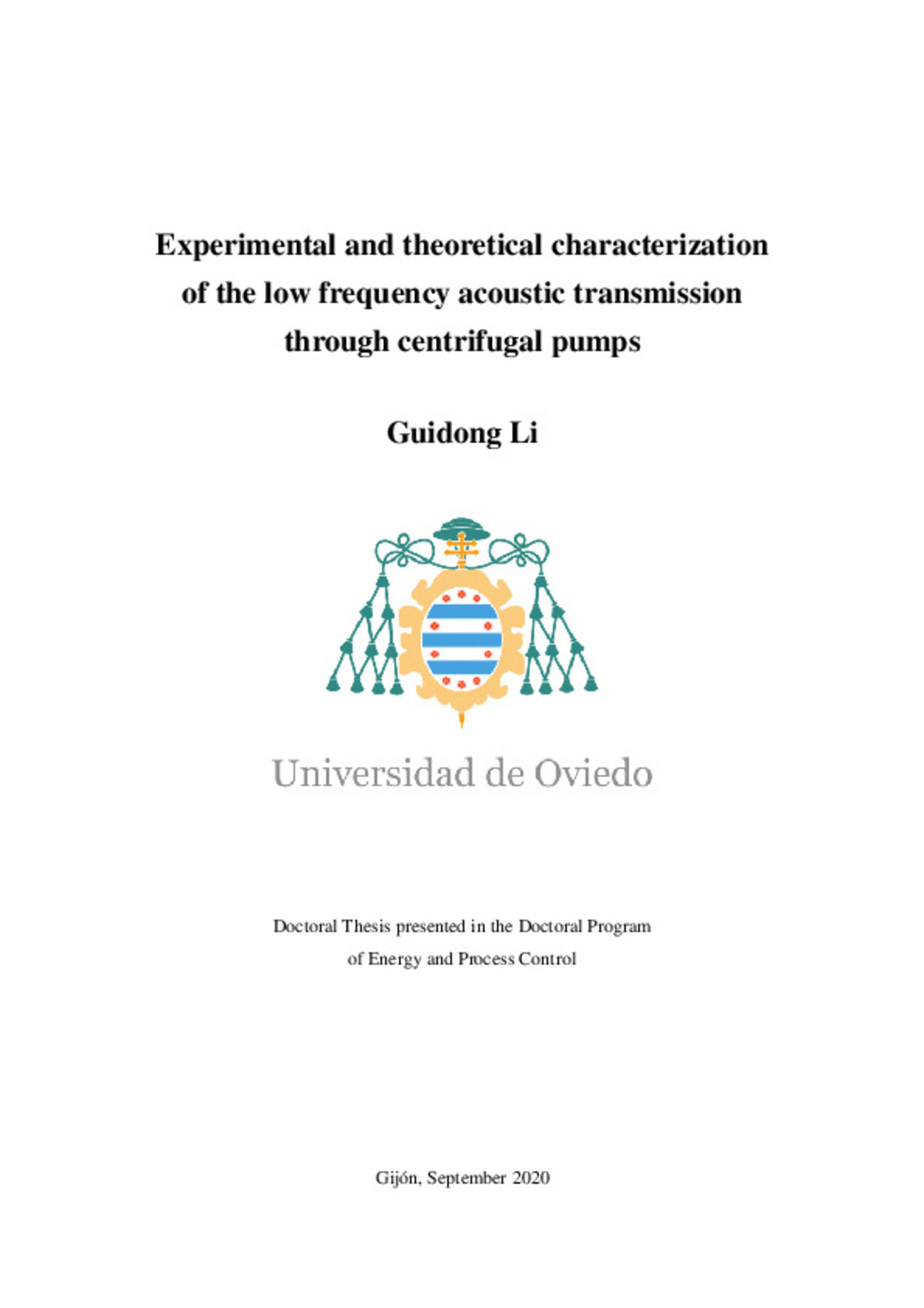Experimental and theoretical characterization of the low frequency acoustic transmission through centrifugal pumps
Otros títulos:
Caracterización experimental y teórica de la transmisión acústica de baja frecuencia a través de bombas centrífugas
Autor(es) y otros:
Director(es):
Centro/Departamento/Otros:
Palabra(s) clave:
Bombas centrífugas
Transmisión acústica
Fecha de publicación:
Descripción física:
Resumen:
Fluid-dynamic noise in hydraulic systems has gained high attention in the last decades due to the increasing requirements of vibration and noise reduction in many fields. Usually the most significant sound sources in the system are fluid machines such as centrifugal pumps, in which flow pulsations are generated with amplitude that depends on the operating conditions (velocity and flow-rate). The resulting pressure fluctuations induced at a given frequency and position along the pipes also depend on the acoustic response of the system, i.e., on how the acoustic pulsations are transmitted or reflected at each system component, including the pump itself. Therefore, the direct measurement of pressure pulsations in a pipeline of a test pump does not directly reflect the acoustic properties of the pump itself, because the coupling effects of the hydraulic system, which can even cause standing waves, may be seriously misleading.
Fluid-dynamic noise in hydraulic systems has gained high attention in the last decades due to the increasing requirements of vibration and noise reduction in many fields. Usually the most significant sound sources in the system are fluid machines such as centrifugal pumps, in which flow pulsations are generated with amplitude that depends on the operating conditions (velocity and flow-rate). The resulting pressure fluctuations induced at a given frequency and position along the pipes also depend on the acoustic response of the system, i.e., on how the acoustic pulsations are transmitted or reflected at each system component, including the pump itself. Therefore, the direct measurement of pressure pulsations in a pipeline of a test pump does not directly reflect the acoustic properties of the pump itself, because the coupling effects of the hydraulic system, which can even cause standing waves, may be seriously misleading.
Notas Locales:
DT(SE) 2020-136
Colecciones
- Tesis [7486]
- Tesis doctorales a texto completo [2006]
Ficheros en el ítem





